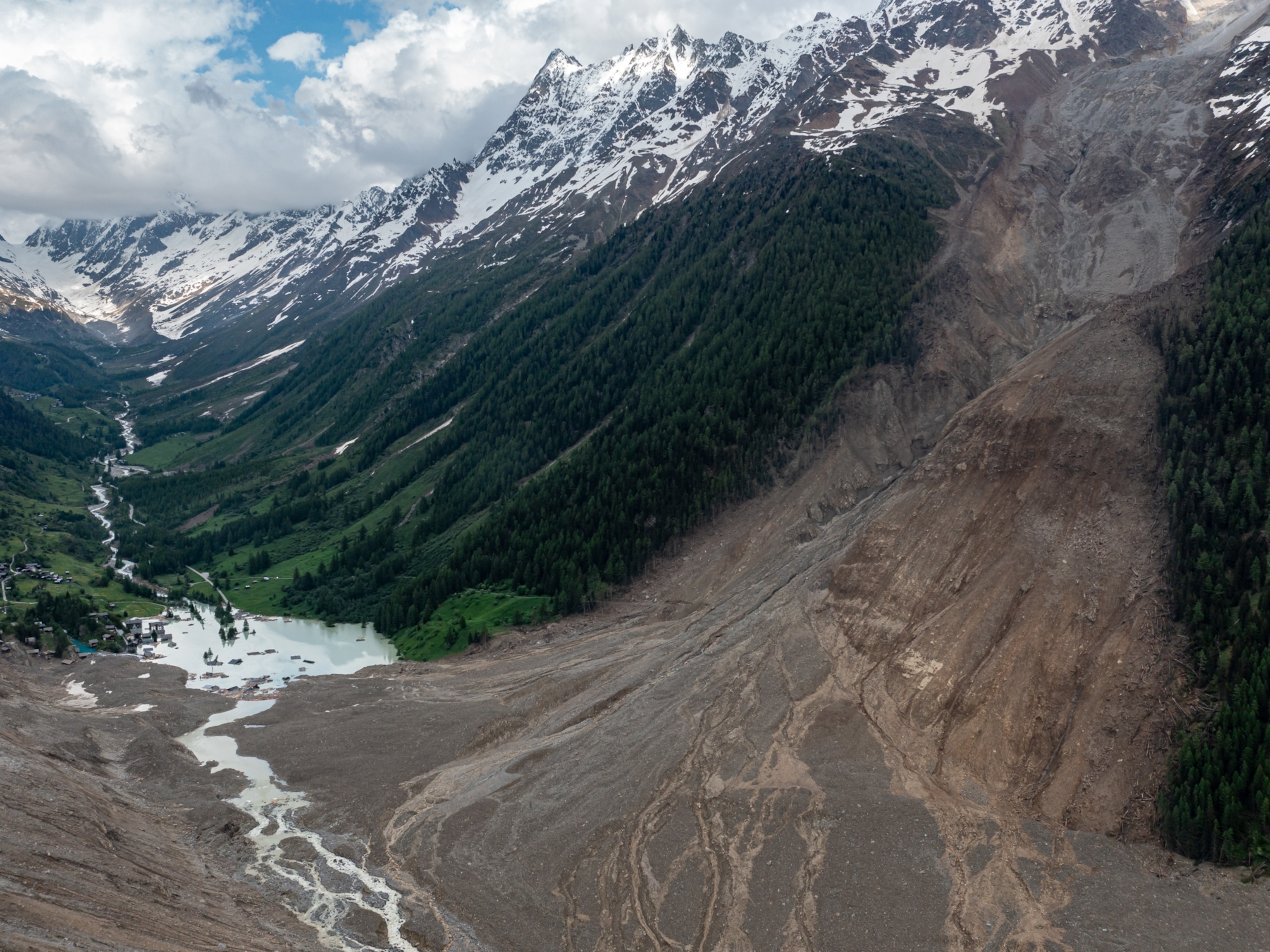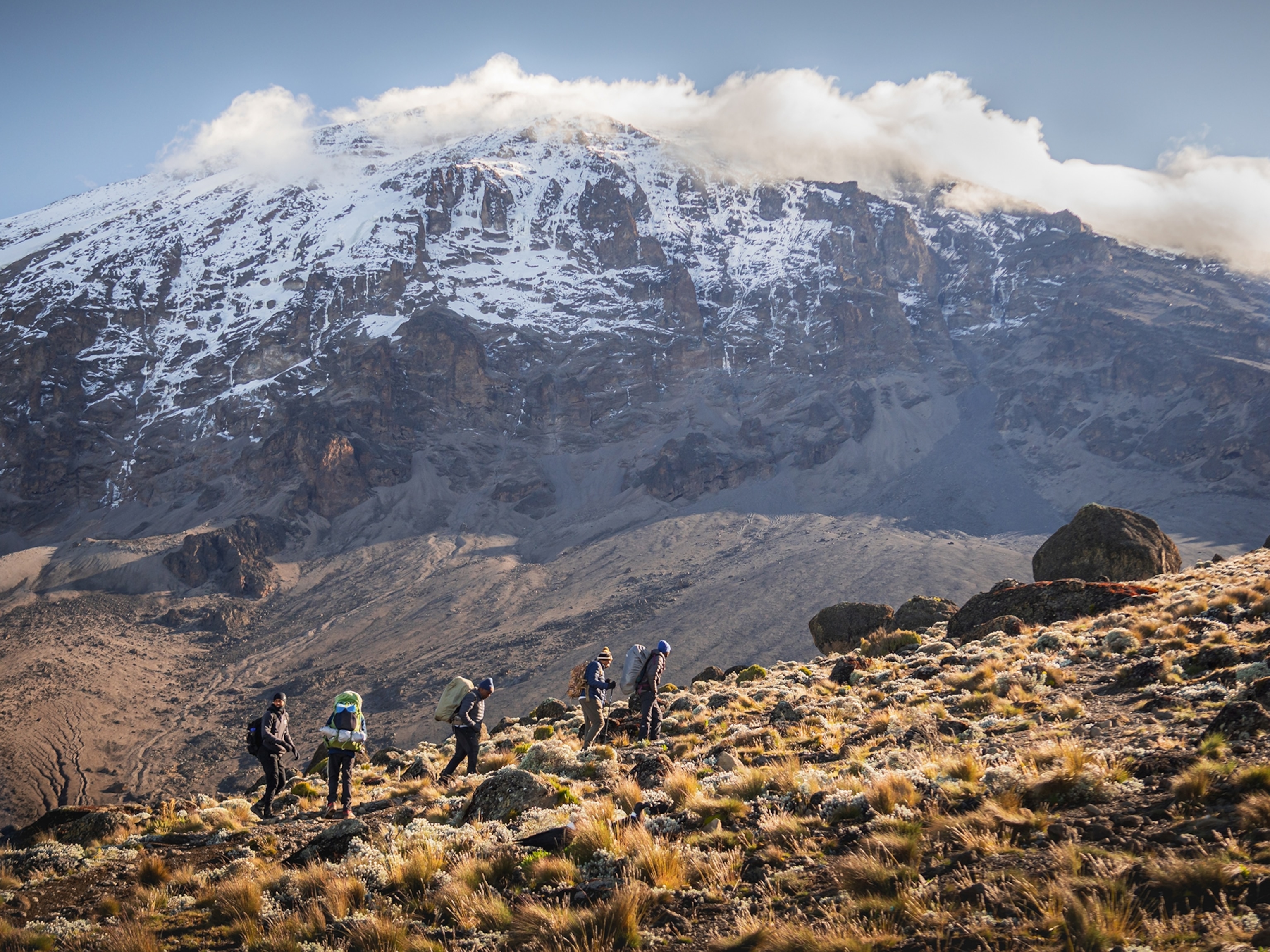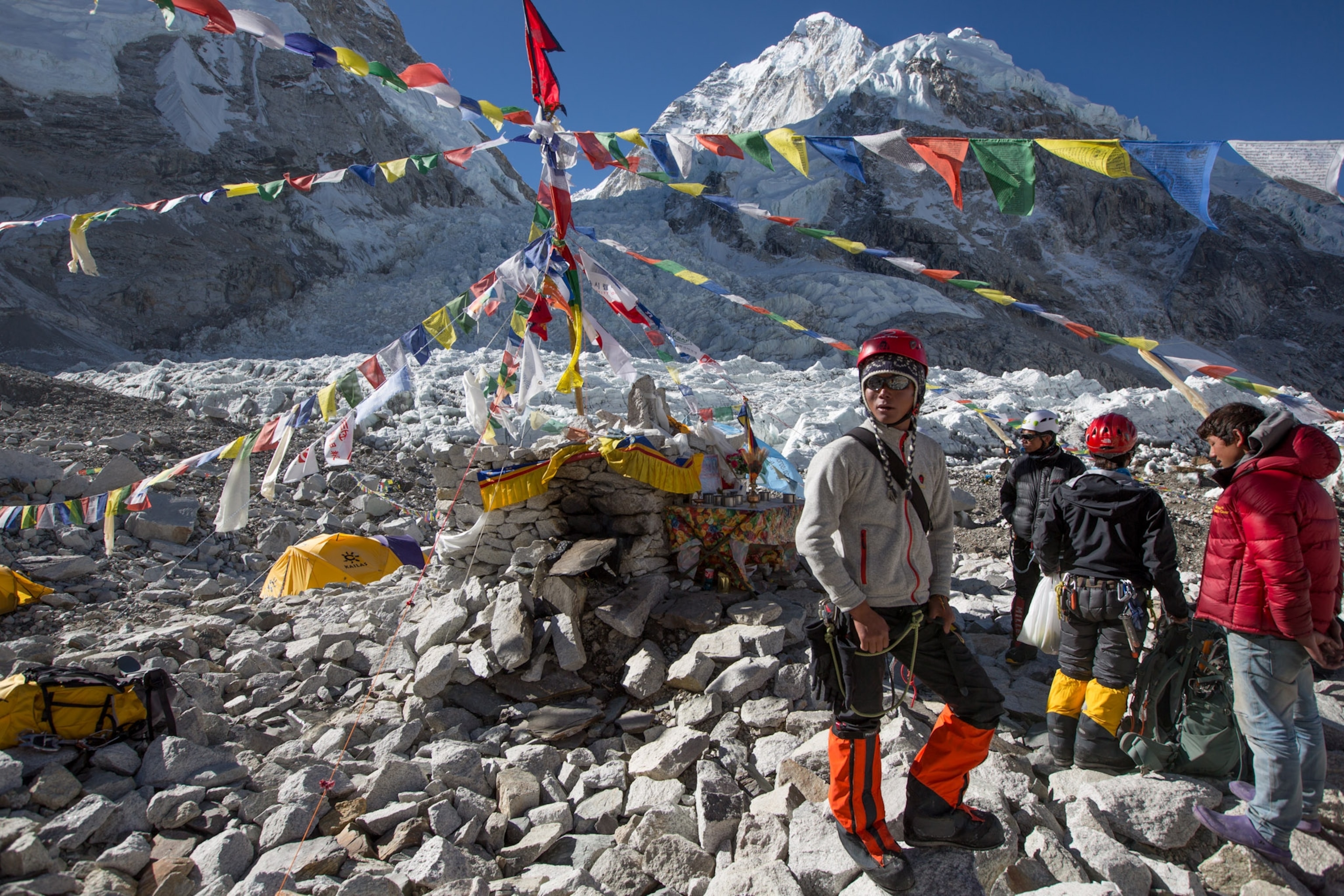
Photographer of Sherpas: Everest Avalanche "Will Be Spoken of for Generations"
National Geographic photographer Aaron Huey says Sherpas face high risk.
A deadly avalanche on Mount Everest that left 13 Sherpa guides dead and three missing Friday morning shines a light on a remote community of workers that routinely takes on high risk to support foreign climbers.
Seattle-based National Geographic photographer Aaron Huey has documented remote Sherpa communities around Mount Everest over the past year. We asked him how the communities respond to the risks.
How important a role do Sherpas play in the climbing ecosystem?
There are two different climbing worlds that exist. There are the professional climbers who can operate on their own in any conditions around the world, and then there are commercial expeditions, groups of wealthy but inexperienced climbers who would not be able to climb without the work of the Sherpas. Everything in that industry is built on their backs.
The Sherpas cross through the Khumbu Icefall, which includes an area called "the popcorn" [where the avalanche happened Friday] many more times than anyone else. That is one of the most dangerous parts of the mountain besides the summit push. They have to set the ladders that cross through house-size ice blocks. I wouldn't shoot photos in the Icefall if Nat Geo paid me $100,000—it's too big of a lottery.
What do the Sherpas do to minimize the risks?
Move really fast. And pray, literally. And try to understand the snow conditions. (Read "The Sherpas" in National Geographic magazine.)
Is the danger greater this early in the season?
I'm not an expert on the conditions on the mountain, but I would guess that it would be because nobody has seen the conditions yet with their own eyes. As groups are advancing, every step into the unknown is dangerous because nobody knows what's there.
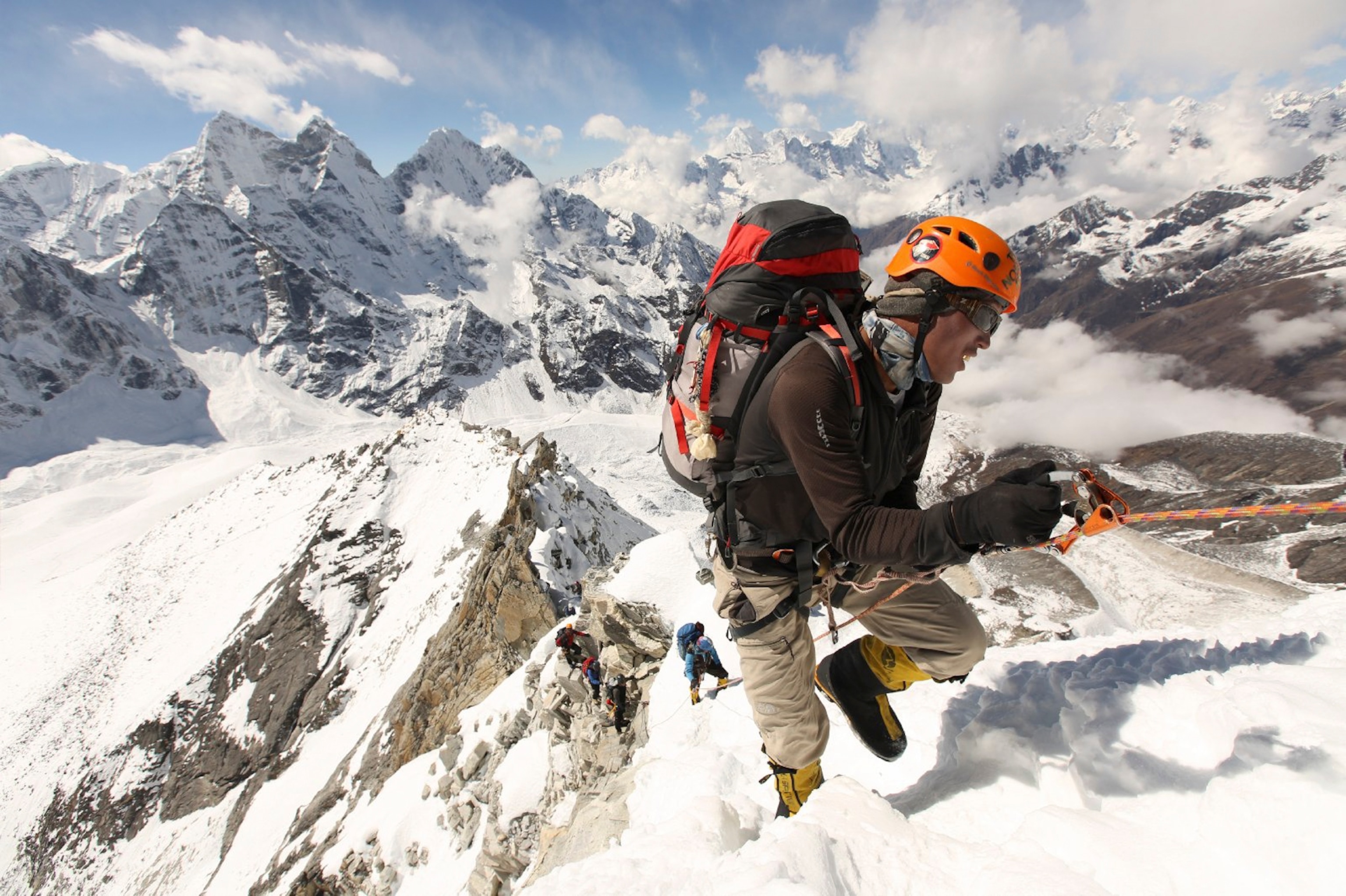
How do the Sherpa communities deal with the risk?
The majority of the Sherpa climbers I talked to don't really want to be doing this business, but when you live in this super-remote mountain valley where there is this highway of money coming through, you go out and risk your life.
Before commercial expeditions, there were only three things: yak, buckwheat, and potatoes. When you can make 30 times as much money carrying loads up icefalls and setting up tents on Everest, you're going to not do the buckwheat. A lot of these guys are just trying to do it long enough to get their kids in a private school in Kathmandu and build a teahouse in their village, where they can retire.
There is a slice of the community that lives to climb and go from mountain to mountain, just like my Western friends who do that, but those guys are in an extreme minority. Most do it because it's the only real business. That's one thing a lot of people don't think about.
The only way to make real money is to cater to commercial expeditions, including providing lodging, food, or mountain needs, and the more risky the job the more it pays. (See "Sherpa Perspective Explored in New Everest Film.")
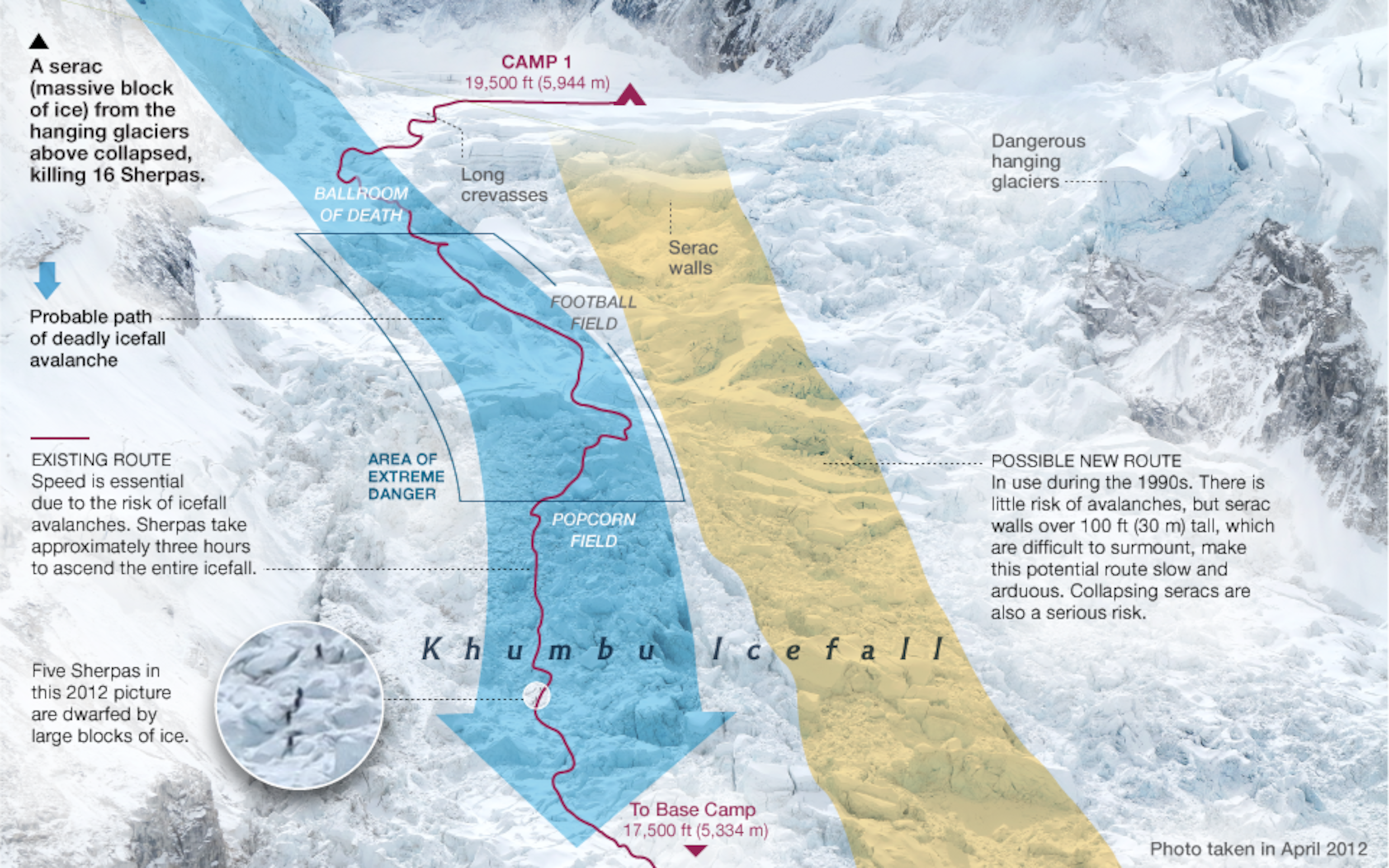
Does that relationship have negative impacts on the Sherpa communities?
For the most part I think it is pretty positive. With that money these communities can have access to electricity, better clothes, and other things they need. But there is a tradeoff: Way more people risk their lives to get that comfort. There is a good relationship between the Sherpa communities and Westerners who pass through, but it is risky and they are gambling a lot more than we are.
If they survive and make it home, it is a great deal for them because they can really take care of their families with this money. The problem is that sometimes they don't make it home.
Did the fight that took place between Sherpas and Western climbers in late April 2013 exemplify growing tensions?
This is a high-stakes environment; there's going to be friction sometimes. I don't think it is a marker of anything substantial.
But Westerners and Sherpas see the mountains in a different way. Sherpas have a kind of reverence for the mountain that most commercial clients and Western athletes don't. A lot of Sherpas really commune with the mountain. There is an experience there on a deeper level that is different from people who are rushing to the top for a Facebook post or a world record.
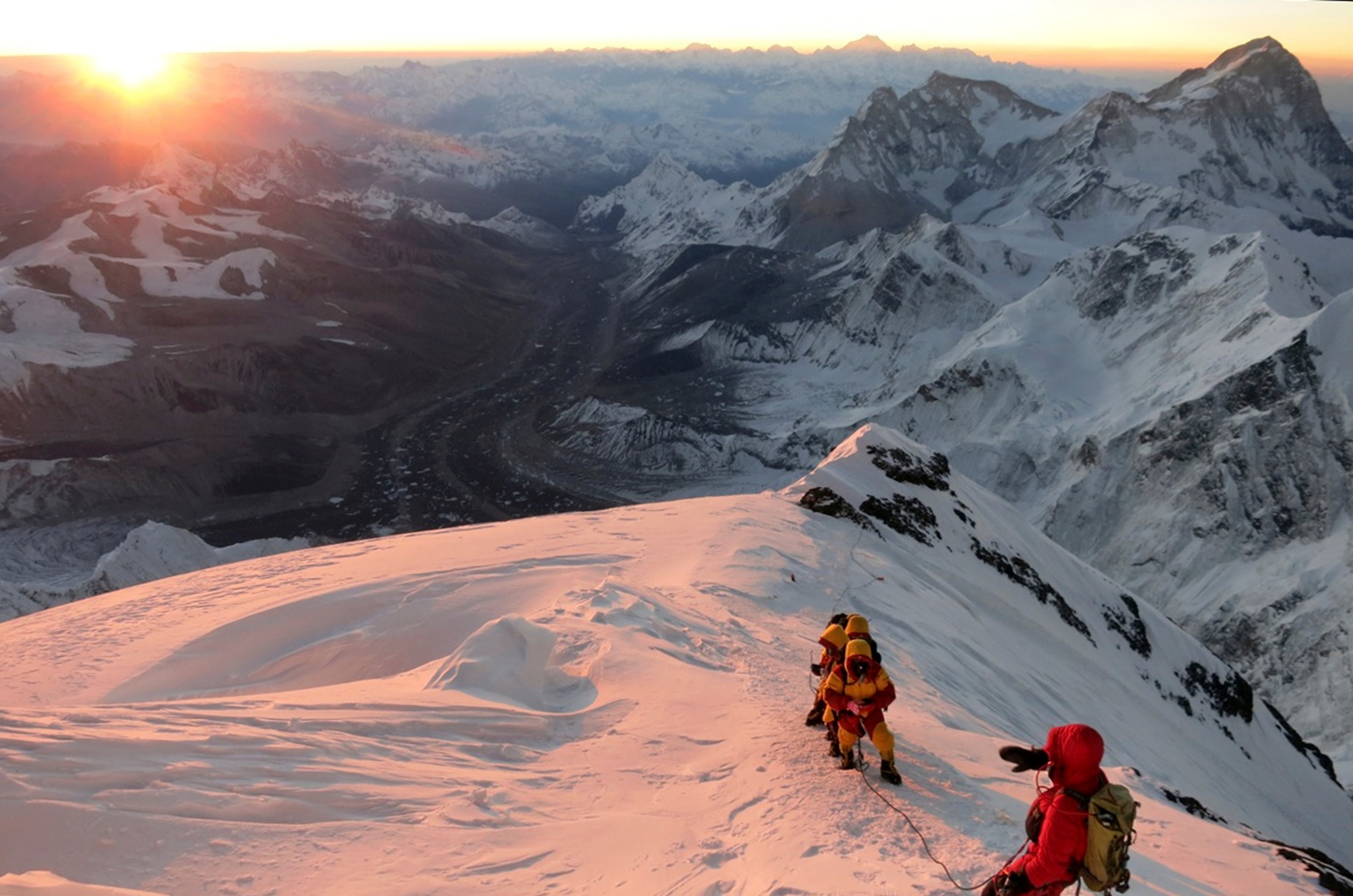
What do you think Friday's accident will mean to the Sherpa community?
This is a huge blow to the community. This will be spoken of for generations in these communities. It will be something that the young people think about when they know it's their turn.
A lot of these guys start at 16 years old. In their minds they are going to ask, "Is that going to be me? My father died, or my uncle died, [and] I remember what happened in 2014."
It's going to be a marker. There's going to be more people saying, "I do this because I have to, not because I want to."
Follow Brian Clark Howard on Twitter and Google+.
Have you ever been to Mount Everest? Share your experiences in the comments.

